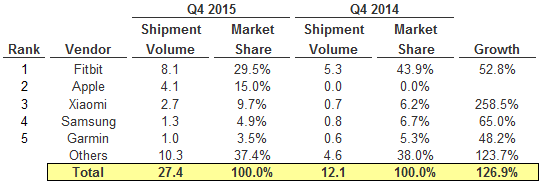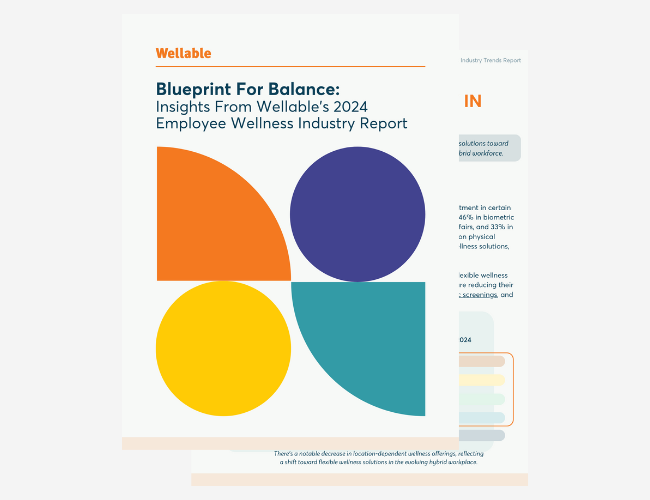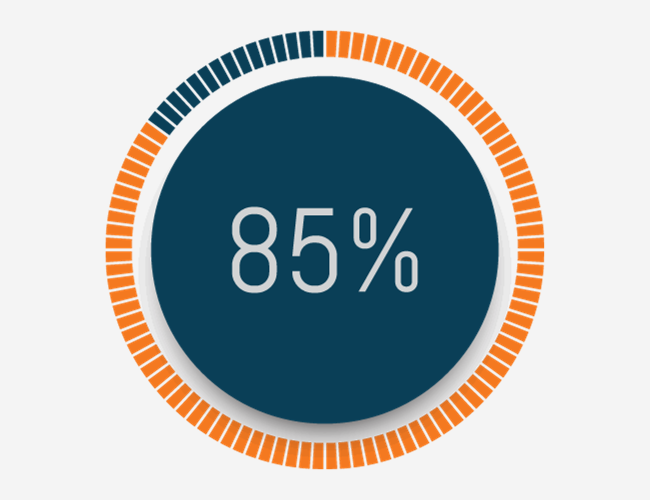According to a new report from IDC, market share in wearable device shipments for Q4 2015 saw fairly significant shifts relative to previous quarters. Samsung broke into the top five while Fitbit furthered its lead over Apple and Xiaomi. Total shipment volume for the quarter came to 27.4 million units, up 126.9% from the 12.1 million units shipped in Q4 2014. For the full year, vendors shipped a total of 78.1 million units, up a strong 171.6% over 2014. The table below breaks down the details of the shipments and ranks the leaders by market share.

The data provides a number of insights into the corporate wellness market so we thought we would talk about some of them below.
Fitbit Expands Their Market Share
Fitbit ended the year the same way it began it: as the undisputed worldwide leader of wearable devices. However, in Q4 2015 the market leader was able to expand their market share to nearly 30% from 24% and 22% in Q3 2015 and Q2 2015, respectively. Two victims of Fitbit’s gains were Apple and Xiaomi who both saw drops in market share for the quarter. Fitbit’s success continues to be rooted in a well-segmented device portfolio, fast-growing corporate wellness program, and extended market reach around the world.
Apple Watch Bets Big On Gen 2
Despite the holiday season, Apple saw modest growth in its Watch product. In order to regain market share, Apple’s next-generation Watch must leverage the company’s platforms (HealthKit, ResearchKit, WatchKit, and watchOS 2) and connectivity capabilities.
Xiaomi Focuses On International Growth And Affordability
“Xiaomi’s focus on inexpensive fitness trackers resonated within China, with prices far below the competition (as low as $11 USD), making the Mi Band an inexpensive purchase.” This approach contributed to Xiaomi having the largest year-over-year improvement of any vendor on the list. Xiaomi’s latest device, the Mi Band Pulse, continues that tradition ($13 USD) even as it adds constant heart rate monitoring. This puts the company on a more even playing field with other vendors but not enough to stand out against the crowded market.
No Company Made Up More Than 30% of Q4 2015 Market Share
Despite their huge success, none of the top producers made up more than 30% of Q4 2015 market share, which makes it challenging for a corporate wellness program to rely on the adoption of a single device to promote consumerism within their company. Wearables are becoming more popular, but employees are using different devices to track their health. Even if an employer is able to purchase devices, employees will want to use their own. Try convincing an Apple Watch user to give his or her device up for a Fitbit Flex that their company bought them.
This challenge is why Wellable encourages the implementation of a bring your own device (BYOD) strategy for wellness. A BYOD strategy for wellness allows employers to embrace all forms of wellness technologies, including devices and apps that are not Fitbit, Apple Watch, or Xiaomi. It will enable consumer choice and result in lower costs for your program. Download our free white paper for more information on BYOD for wellness.












